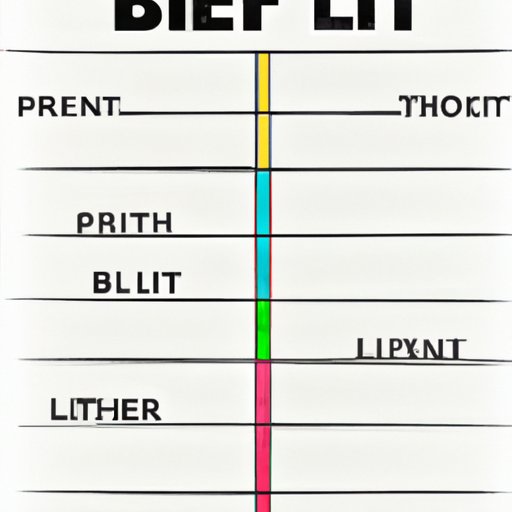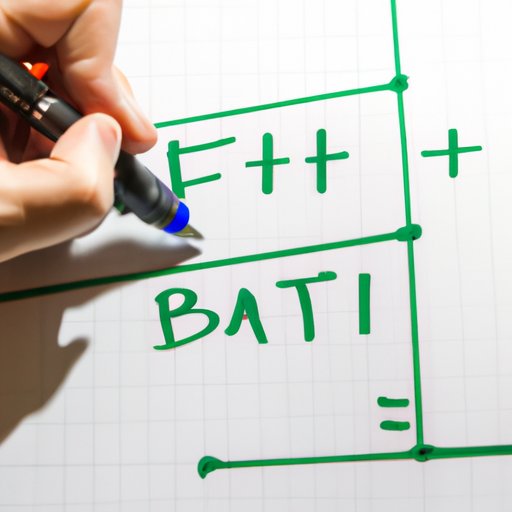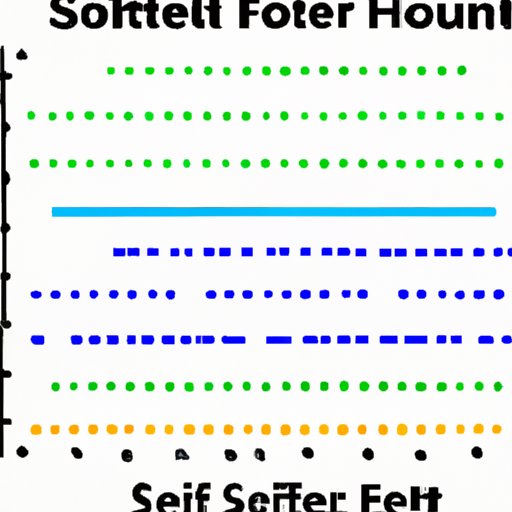Introduction
The line of best fit is a tool used in statistics to represent the relationship between two variables. It is a straight line that is drawn through a set of data points on a graph so that the sum of squares of the distances from each data point to the line is minimized. In other words, it is the line that best represents the correlation between two variables.

Definition of Line of Best Fit
A line of best fit is a straight line that passes through the maximum number of data points in a given set. It is also referred to as a trend line or regression line. The line of best fit is often used to analyze data and make predictions about future trends. It can also be used to identify correlations between two variables.
Overview of Different Types of Lines of Best Fit
There are several different types of lines of best fit. The most common type is the linear line of best fit, which is a straight line that passes through the maximum number of data points. Other types of lines of best fit include polynomial, exponential, and logarithmic.

Visualizing Data and Identifying the Best Line of Fit
Once you have determined the type of line of best fit you need, the next step is to visualize the data. This can be done using a scatter plot, which is a graph with dots that represent the values of two variables. By plotting the data points on a scatter plot, you can easily see the relationship between the two variables and identify the best line of fit.
Scatter Plots
Scatter plots are one of the most commonly used tools to visualize data. They are used to show relationships between two sets of data. Scatter plots allow you to quickly identify clusters, outliers, and trends in the data. Once the data is plotted, you can draw a line of best fit through the data points. This line will represent the correlation between the two variables.
Other Visualization Tools
In addition to scatter plots, there are other tools that can be used to visualize data. These tools include histograms, box plots, and line graphs. Each of these tools can be used to identify trends and relationships in the data. Once the data has been visualized, you can then draw the line of best fit.

Calculating the Equation of the Line of Best Fit
Once you have identified the best line of fit, the next step is to calculate the equation of the line. To do this, you will need to use a mathematical formula known as the least-squares method. This method uses the data points to calculate the slope and y-intercept of the line of best fit. The equation of the line of best fit is then calculated using the slope and y-intercept.
Step-by-Step Instructions
To calculate the equation of the line of best fit, follow these steps:
- Calculate the mean of the x-values and the mean of the y-values.
- Calculate the difference between each x-value and the mean of the x-values, and the difference between each y-value and the mean of the y-values.
- Multiply the differences together to calculate the covariance.
- Divide the covariance by the variance of the x-values to calculate the slope of the line of best fit.
- Subtract the product of the slope and the mean of the x-values from the mean of the y-values to calculate the y-intercept.
- Plug the slope and y-intercept into the equation of a line to calculate the equation of the line of best fit.
Determining Accuracy and Interpreting Results
Once the equation of the line of best fit has been calculated, it is important to determine its accuracy. This can be done by testing the line against new data points. If the line accurately predicts the results of the new data points, then it is an accurate line of best fit. If not, then the line needs to be adjusted.
Methods for Determining Accuracy
There are several methods for determining the accuracy of a line of best fit. One method is to calculate the coefficient of determination (R2). This is a measure of how well the line of best fit explains the variability in the data. Values close to 1 indicate that the line of best fit is a good fit for the data. Another method is to calculate the standard error of the estimate, which measures the average distance between the data points and the line of best fit.
Interpreting Results
Once the accuracy of the line of best fit has been determined, it is important to interpret the results. The slope of the line indicates the relationship between the two variables. A positive slope indicates a positive correlation between the variables, while a negative slope indicates a negative correlation. The y-intercept indicates the value of one of the variables when the other variable is equal to zero.
Conclusion
Finding the line of best fit is an important step in analyzing data. It allows you to visualize the relationship between two variables and make predictions about future trends. By following the steps outlined in this article, you can calculate the equation of the line of best fit and determine its accuracy. Finally, you can interpret the results to gain insight into the relationship between the two variables.
(Note: Is this article not meeting your expectations? Do you have knowledge or insights to share? Unlock new opportunities and expand your reach by joining our authors team. Click Registration to join us and share your expertise with our readers.)
